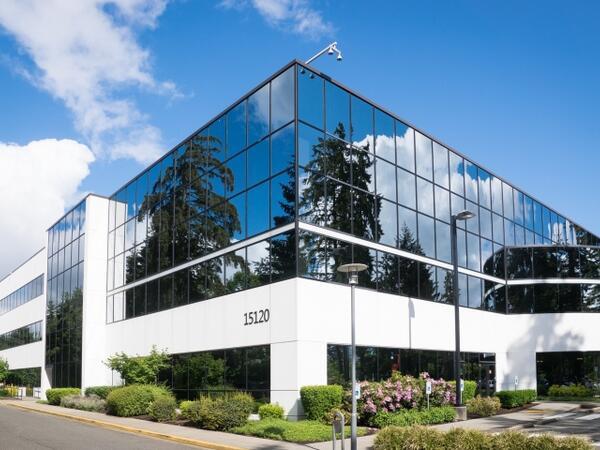
Business Intelligence For Economic Development: GPEC
The Arizona State University Smart City Cloud Innovation Center Powered by AWS (ASU CIC) recently collaborated with the Greater Phoenix Economic Council (GPEC) and the cities of Phoenix, Gilbert, and Surprise Arizona to apply Amazon’s Working Backwards Innovation process to support regional economic development efforts. Greater Phoenix is a rapidly growing region - with Phoenix now the 5th largest and fastest growing city in the United States. This rapid growth has increased the challenges for municipal economic development staff to identify and act on opportunities.
GPEC actively works to attract and grow quality businesses and advocate for the competitiveness of Greater Phoenix. Over the past 30 years GPEC has fueled the regional economy by helping more than 800 companies, creating more than 144,000 jobs, and bringing in $16.1 billion in capital investment.
Problem
Today municipal economic development staff sort through all available business intelligence to identify and assess the information that will be most helpful when prioritizing economic opportunities for their communities. There is more information than anyone could manually digest, analyze, and act on.
To aid in these efforts GPEC approached the ASU CIC for help defining the problem and identifying possible solutions to help member cities maximize economic development resources.
Approach
GPEC works with 22 municipalities in Maricopa County to catalyze economic activity. Each municipality has a team of economic development staff that work to recruit and retain businesses to their community. Across the region the economic development teams have a collaborative predisposition that focuses on helping each other as a region. GPEC supports the local staff and helps to organize regional efforts.
Stephane Frijia, Executive Vice President of GPEC, contacted the ASU CIC and presented a Challenge to find solutions to improve GPEC and the regions ability to use data for targeted opportunities.
Using the Working Backwards process, the group identified a solution utilizing artificial intelligence and machine learning, combined with robust data capabilities and a well-designed user interface to help staff identify the most actionable intelligence. GPEC and the participating economic development teams believe the proposed solutions will help them focus on the most viable opportunities and have a real impact on increasing economic activity.
As part of the ASU CIC process, the team continued their engagement with a Solution Workshop that dove into the specific technical requirements that would be needed to build a prototype. During the workshop, we assessed the data that would be needed, the AWS services that should be used, and a path forward to build out a prototype.
Supporting Artifacts
| Press Release and FAQ | |
| Visual | |
| Building Data Lakes | Building Data Lakes |
Next Steps
The ASU Cloud Innovation Center completed the prototype development in 2020 working with ASU Interns, AWS Solution Architects and GPEC technology staff. The solution was published on https://github.com/ASUCICREPO and made available to other communities as open source information.
About the ASU CIC
The ASU Smart Cities Cloud Innovation Center (CIC) is a strategic relationship with Amazon Web Services (AWS) and is supported by AWS on ASU’s Innovation campus - SkySong. The mission of the CIC is to drive Innovation Challenges that materially benefit the greater Phoenix metro area and beyond. The CIC will do this by solving pressing community and regional challenges, using shareable and repeatable technology solutions from ideation through prototype, as a service for the greater human good.
The CIC also provides real-world problem-solving experiences to students by immersing them in the application of proven innovation methods in combination with the latest technologies to solve important challenges in the public sector.
The challenges being addressed cover a wide variety of topics including homelessness, water conservation, vandalism, pedestrian safety, digital service delivery and many others. The CIC leverages the deep subject matter expertise of government, education and non-profit organizations to clearly understand the customers affected by public sector challenges and develops solutions that meet the customer needs.
For more information on the ASU CIC, to read about projects or to submit a challenge, please visit https://smartchallenges.asu.edu.
About Greater Phoenix Economic Council (GPEC).
Established in 1989, the Greater Phoenix Economic Council (GPEC) actively works to attract and grow quality businesses and advocate for the competitiveness of Greater Phoenix. As the regional economic development organization, GPEC works with 22-member communities, Maricopa County and more than 160 private investors to accomplish its mission, and serve as a strategic partner to companies across the world as they expand or relocate. Consistently ranked as a top national economic development organization, GPEC’s approach to connectivity extends beyond the fabric of the community. Known as The Connected Place, Greater Phoenix is in a relentless pursuit of innovative and entrepreneurial technology-focused companies that are committed to changing the game. As a result, over the past 30 years GPEC has fueled the regional economy by helping more than 800 companies, creating more than 144,000 jobs and $16.1 billion in capital investment.
For more information about GPEC - https://www.gpec.org/
Photos

